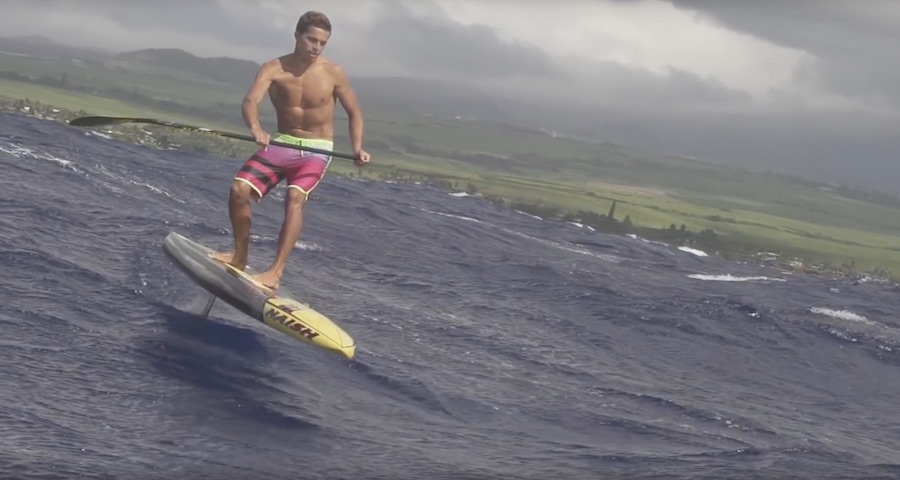
Surfers experienced more stability using RW fins, and CFD results confirmed RW's ability to dampen the effects of turbulent flow. Field results also confirmed that a skill Level 8 surfer performed closer to skill Level 9 when using RW fins, but not control fins. Sustained resultant forces relative to the rider direction were lower for RW fins during the turn, suggesting a less-skilled surfer could generate faster and more powerful turns using RW fins. Because of the skill level differences suggested by the field data, dynamic computational fluid dynamics (CFD) analysis was performed to simulate cutback maneuvers at three different rotation rates (roll/pitch/yaw). Statistically significant cutback performance improvements were seen when surfers used the RW fin.


Some surfers used two different fin types: a standard commercial fin (C), and a 3D-printed, humpback whale-inspired fin (RW). The results revealed a positive correlation between surfer skill level and roll/pitch/yaw rates during a cutback.
Airfoil surfboard professional#
Data were collected from four surfers of differing skill levels, ranging from intermediate/advanced (Level 6) to top-ranked professional (Level 9). In this paper, GPS sensors with 9-axis motion sensors were used to collect data on nearly 2000 surfed waves. We found using RW fins allowed a skilled surfer to improve their surfing performance relative to a professionally ranked surfer.Ĭompared to other Olympic sports, little research exists on competitive shortboard surfing-especially research comparing field and numerical data. Turn rates using RW fins also improved, although not significantly. ANOVA revealed surfers using RW fins showed significant improvements in power generation compared to when they used standard commercial fins. Eighteen turn performance values were measured and calculated, including novel, surfing-specific rotational power coefficients. We collected surfing data from instrumentation attached to surfboards, including GPS and 9-axis motion sensors. Fieldwork involved surfing almost 2,000 ocean waves from around the world, comparing standard commercial fins with straight leading edges to RW fins. We evaluated low aspect ratio, thruster-style 3-fin configurations used in high-performance surfing.

It is also the first study presenting evidence of dynamic performance of tubercled designs rotating on all three axes. We present field results revealing improved surfing performance when a novel approach (“Real Whale”, RW) is used for applying several of the humpback whale’s passive flow control mechanisms, including tubercles, to surfboard fins. Both field and CFD results suggest RW designs are more efficient, require less material to manufacture, and provide more control than hydrofoil shapes with straight leading edges or standard tubercled designs. Fieldwork involving surfing of 665 ocean waves (using GPS tracking systems coupled with 9-axis motion sensors), revealed that, compared to a standard longboard fin, the RW fin provided longer rides, and faster max and average speeds, especially in more powerful waves. CFD images of wall shear stress revealed RW applications possibly have less potential to stall and cavitate, thereby improving control. High Re improvements were greater than low Re improvements. C_l and delayed stall were improved for RW above 20° α. Applying the RW design to longboard fins resulted in increased overall lift to drag ratio, and reduction in C_d compared to a control (C) and tubercled (CT) design above 10° angle of attack (α). CFD analysis was performed at Reynolds numbers (Re) between 10^5 and 10^6. This paper covers computational fluid dynamics (CFD) analysis and field investigations used to evaluate the performance of a novel method (“Real Whale”, RW) for applying several of the humpback’s passive flow control mechanisms, including tubercles, to surfboard fins. The humpback whale flippers’ leading-edge tubercles have received much attention since the 1990’s.


 0 kommentar(er)
0 kommentar(er)
